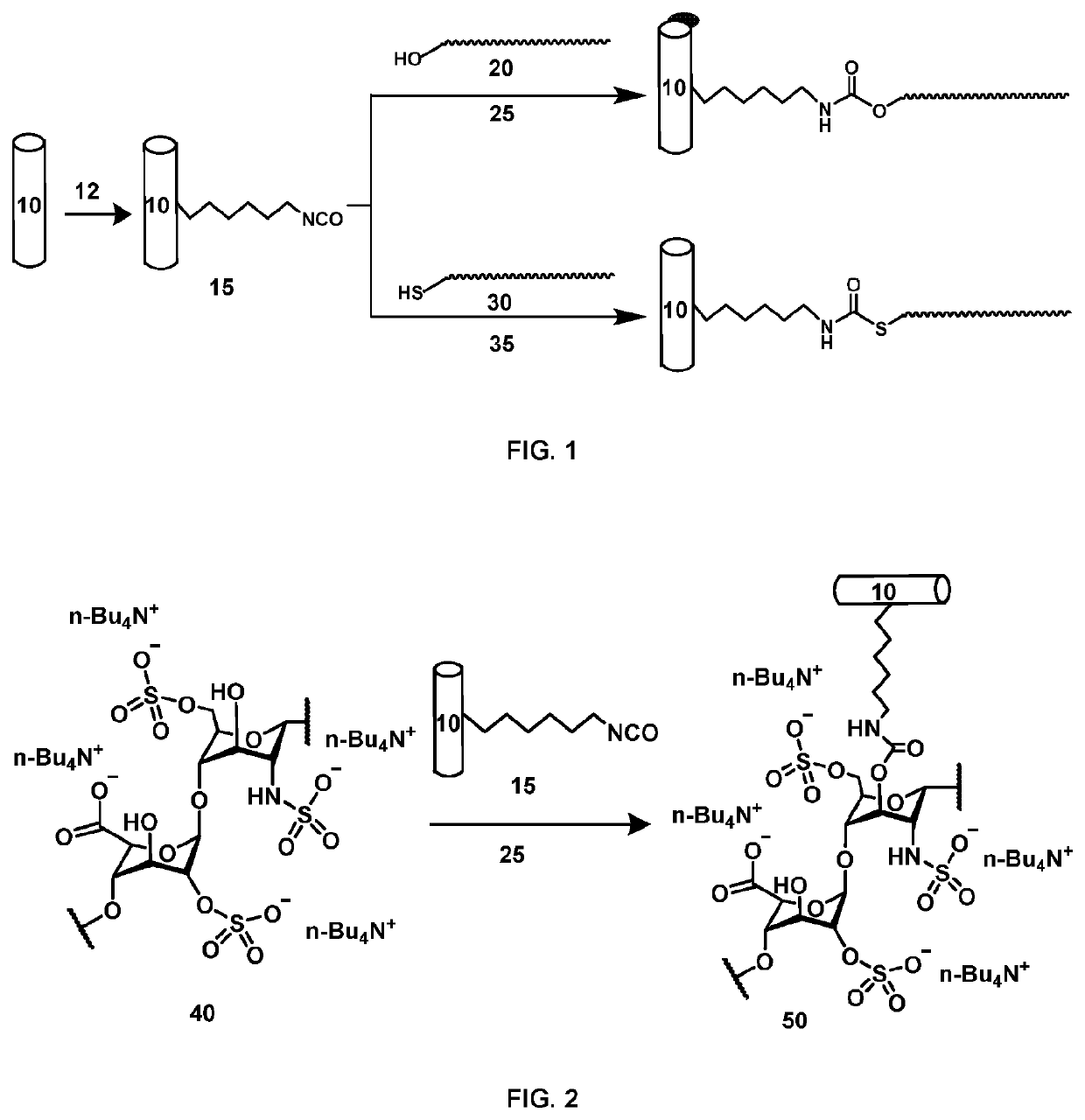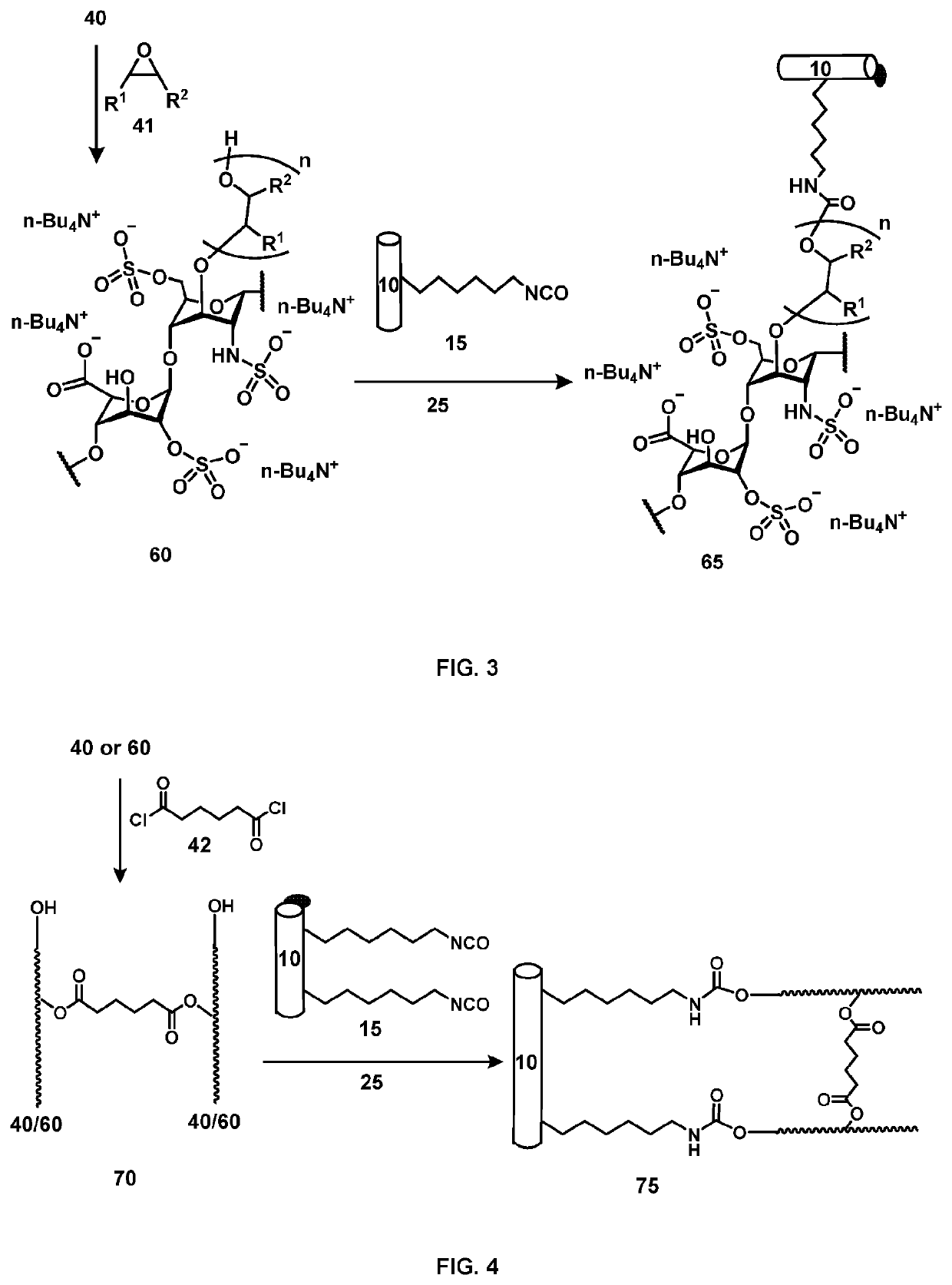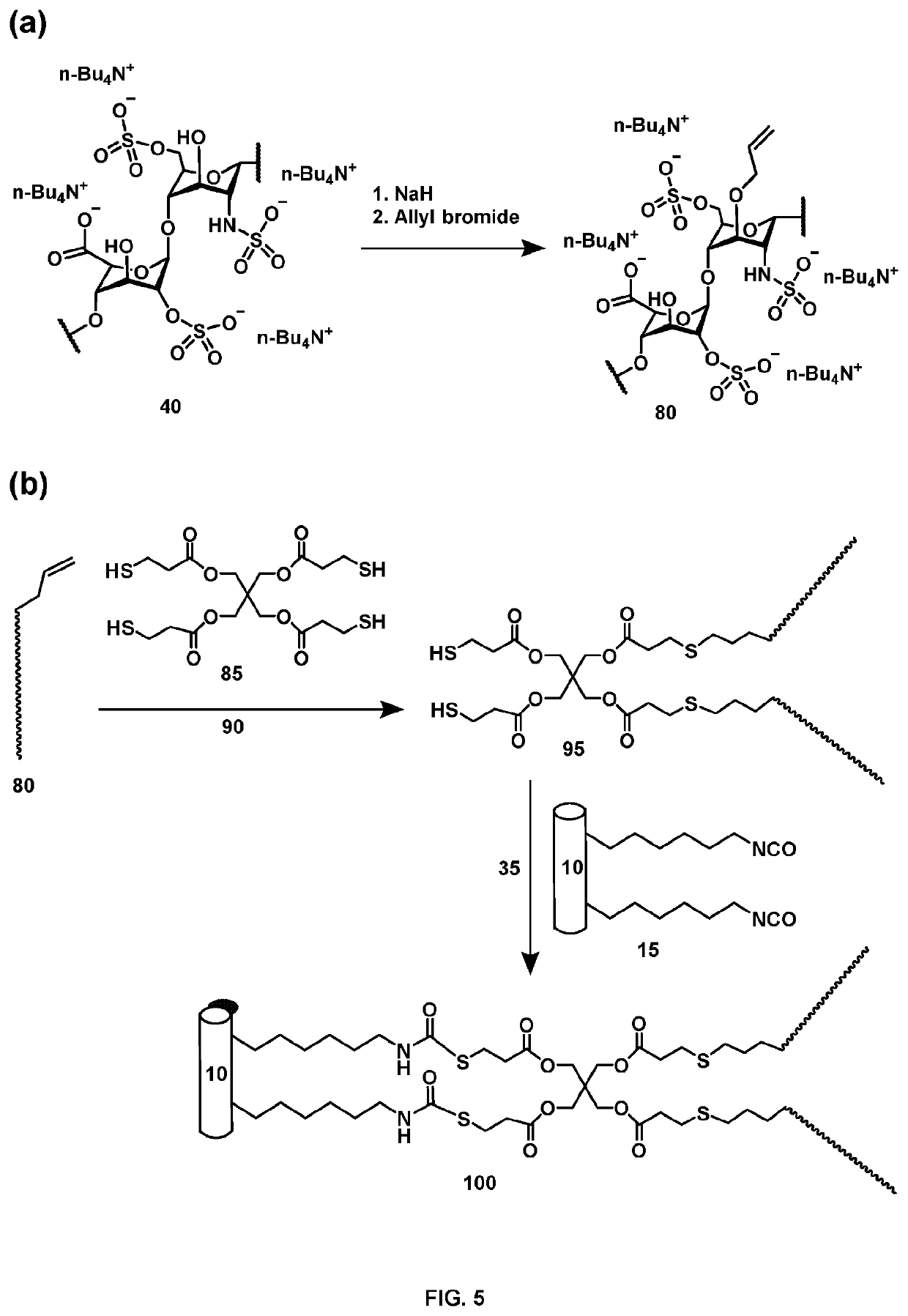Medical device comprising covalently bonded heparin coating
a covalent bonding and heparin technology, applied in the field of medical devices, can solve the problems of reducing the antithrombogenic ability of heparin, time-consuming and costly multi-step coating route, and all reactions were carried out in thf or dcm
- Summary
- Abstract
- Description
- Claims
- Application Information
AI Technical Summary
Benefits of technology
Problems solved by technology
Method used
Image
Examples
example 5
Blood Test of the Heparin Coated PU Tubes
[0303]The heparin coated samples 4-10, original uncoated PU tube (or “control sample” here), PHMDI-coated PU tube (from general procedure 2) and HDI-coated PU tube (from general procedure 3) were tested with goat blood for their antithrombotic effect.
[0304]Sample Preparation
[0305]The samples or PU tubes / catheters were cut into 1 cm segments. Prior to the test, the samples 4 to 10 were incubated in ultra-pure water for 24 hrs to release un-bonded heparin-TBA.
[0306]Test Procedure
[0307]The test was performed at room temperature. Each 1 cm tube segment sample was placed into a 15 mL polypropylene (PP) tube with 1 mL of goat blood. Details of the goat blood used are described in Table 1. The test set-up is described in Table 2.
TABLE 1Information of goat blood.ProductDonor Goat Blood / Na3-CitrateDescriptionGoat whole blood recovered from wholeblood donations from normal healthy goats.Citrate concentrationVolume ratio (v / v) of (4 wt % Sodium citrates...
PUM
 Login to View More
Login to View More Abstract
Description
Claims
Application Information
 Login to View More
Login to View More - R&D
- Intellectual Property
- Life Sciences
- Materials
- Tech Scout
- Unparalleled Data Quality
- Higher Quality Content
- 60% Fewer Hallucinations
Browse by: Latest US Patents, China's latest patents, Technical Efficacy Thesaurus, Application Domain, Technology Topic, Popular Technical Reports.
© 2025 PatSnap. All rights reserved.Legal|Privacy policy|Modern Slavery Act Transparency Statement|Sitemap|About US| Contact US: help@patsnap.com



